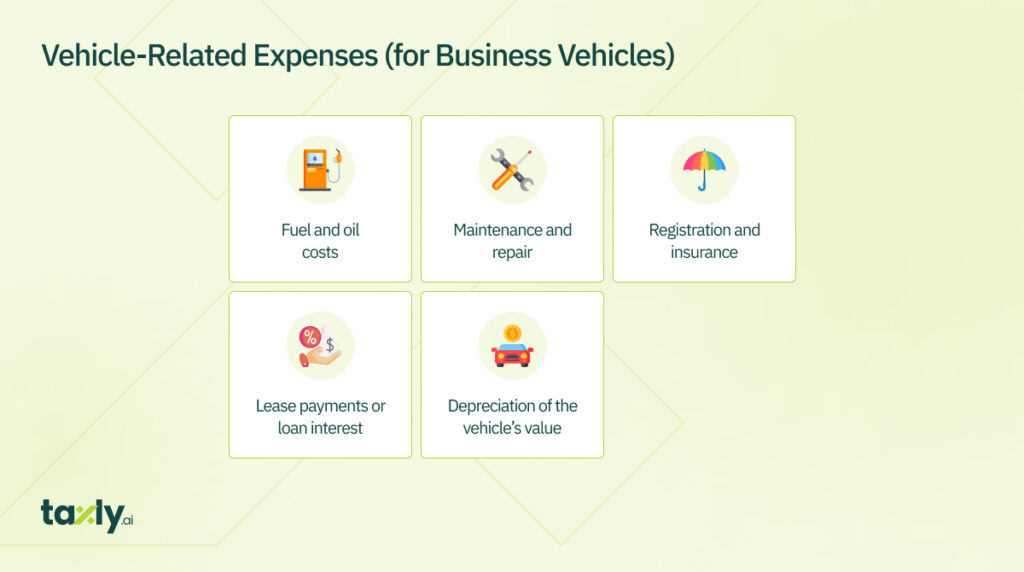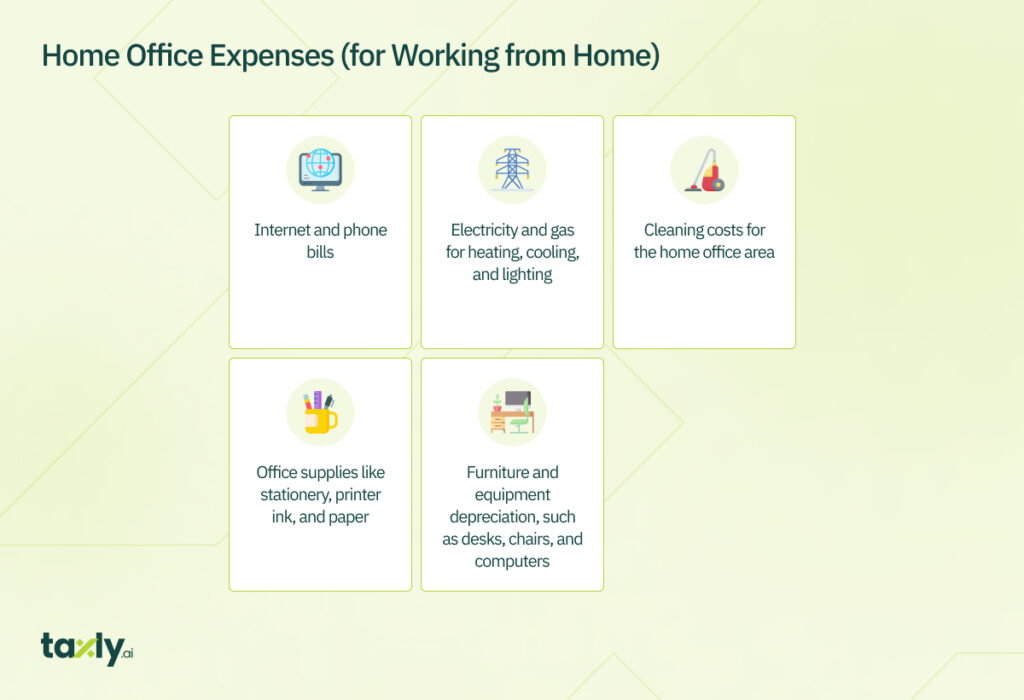When it comes to tax deductions, choosing the right method to calculate your expenses is crucial. One effective approach is the Actual Cost Method. This method allows taxpayers to claim deductions based on the actual expenses incurred. Unlike standardized deduction methods, it offers a more personalized calculation, potentially maximizing your tax benefits.
What is the Actual Cost Method?
Simply put, the Actual Cost Method is a tax deduction approach where you claim expenses based on the actual amounts spent on business-related activities, rather than using standardized rates or estimates.
Benefits of the Actual Cost Method
- Accuracy: It provides a more accurate reflection of your expenses.
- Flexibility: Suitable for diverse situations and different types of vehicles or home office setups.
- Potential for Higher Deductions: If your actual expenses are significant, this method could lead to higher deductions than standard methods.
Which Expenses Are Eligible to Claim Under the Actual Cost Method
Vehicle-Related Expenses (for Business Vehicles):
For Companies and Trusts: If your business is structured as a company or a trust, you are required to use the Actual Cost Method for any type of vehicle used for business purposes, be it a car, van, or motorcycle.
For Sole Traders and Partnerships: This method is applicable if you are claiming for vehicles other than cars, such as motorcycles or vans. For cars, you have the option to choose between the Actual Cost Method and other available methods like the cents per kilometre or logbook method.
Suggested Read: Your Complete Guide to Work Related Business Trip Tax Deduction
You can claim following expenses:
- Fuel and oil costs.
- Maintenance and repairs.
- Registration and insurance.
- Lease payments or loan interest (if applicable).
- Depreciation of the vehicle’s value.

For Example: John owns a small business and uses his van for both deliveries and personal errands. His total annual vehicle expenses amount to $5,000. If he uses the van 60% for business, he can claim $3,000 ($5,000 * 60%) under the Actual Cost Method.
Home Office Expenses (for Working from Home):
You can claim following home office expenses:
- Internet and phone bills.
- Electricity and gas for heating, cooling, and lighting.
- Cleaning costs for the home office area.
- Office supplies like stationery, printer ink, and paper.
- Furniture and equipment depreciation, such as desks, chairs, and computers.

The Actual Cost Method is not limited to certain business structures. However, to claim home office expenses under this method, you must meet specific criteria:
Incurring Additional Expenses: Your work from home arrangement must lead to extra expenses that wouldn’t have been incurred otherwise.
Documentation and Records: You need to have a record of purchases and bills related to your home office expenses.
Dedicated Work Space: You should have a specific area of your home set aside for work purposes, which is not used for personal or other household activities.
No Employer Reimbursement: The expenses claimed should not be reimbursed by your employer.
For Example: Sarah is a freelancer working from her home office. Her annual electricity bill is $1,200, and she estimates that 20% of the electricity usage is for her home office. She can claim $240 ($1,200 * 20%) for electricity under the Actual Cost Method.
Record Keeping for Business and Personal Expenses:
For Vehicles:
- Maintain a logbook for a representative period to record the business use percentage of the vehicle.
- Keep receipts and records of all expenses.
For Home Office:
- Calculate the percentage of your home dedicated to your office space and apply this to relevant expenses.
- Keep a diary or log to record the hours you spend working from home.
Important Considerations:
- Mixed-Use Expenses: For expenses related to both business and personal use, only the business portion is claimable. Accurate apportionment based on usage or floor area (for home office) is necessary.
What Can’t You Claim?
Under the Actual Cost Method, there are certain expenses that you cannot claim. These typically include costs that are not directly related to the business use of your vehicle or home office, or that are of a personal nature. Here’s a list of expenses that are typically not claimable:
Non-Business Related Vehicle Expenses:
- Costs associated with personal use of the vehicle. For instance, if you use your car 50% for business and 50% for personal activities, you cannot claim the 50% of expenses that relate to personal use.
- Fines and penalties, such as parking tickets and speeding fines.
Non-Business Related Home Office Expenses:
- Mortgage payments or rent for your home (though a proportion may be claimable in some jurisdictions under specific circumstances, it’s generally not allowable under the Actual Cost Method).
- General household items and services that aren’t used exclusively for your home office, like cleaning supplies or gardening services.
- Home renovation costs, even if they seem to improve your home office space.
Other Non-Deductible Expenses:
- Expenses that have been reimbursed by your employer. If your employer covers certain costs, you can’t claim them on your tax return.
- Costs related to non-work activities or personal leisure.
- Capital expenses or improvements, which are different from repairs and maintenance. Capital expenses usually improve the value of the property or extend its life and often need to be depreciated over time rather than deducted as an immediate expense.
How Depreciation Works Under Actual Cost Method?
Depreciation is the process of claiming the cost of a capital asset over its useful life.
For business vehicles and home office equipment, depreciation reflects the asset’s wear and tear over time.
Under the Actual Cost Method, you can claim a portion of the asset’s cost each year, spreading the expense over several years. Click here to check out our complete guide to depreciation.
How to claim Capital Expenses:
Vehicles: When you purchase a vehicle for business use, you can depreciate its cost. The annual depreciation amount is based on the vehicle’s cost and its effective life as determined by tax guidelines.
Home Office Equipment: Items like computers, desks, and other office equipment can also be depreciated. The depreciation rate depends on the item’s cost and lifespan.
Tax Depreciation Incentives and Limits:
- Incentives: Tax authorities sometimes offer incentives like accelerated depreciation or immediate deductions for certain assets, enhancing the tax benefits.
- Limits: For business cars, there’s often a cap on the cost that can be used for depreciation purposes (known as the ‘car limit’).
Actual Cost Method Vs Other Methods
| Method | Definition | Suitability | Record-Keeping | Flexibility | Best For |
| Actual Cost Method | Expenses are claimed based on the actual amount spent. | Ideal for those with high or variable expenses, offering potentially greater deductions. | Requires meticulous record-keeping, including all receipts and logs. | More flexible, as it accounts for the real costs incurred. | Businesses with significant business-related expenses, mixed-use assets (business and personal), and those who can maintain detailed records. |
| Standard Mileage Rate | Deductions based on a standard amount per mile driven for business. | Beneficial for those with lower business-related vehicle expenses or who prefer simplicity. | Requires less detailed record-keeping; only the business miles need to be logged. | Less flexible, as it doesn’t consider actual expenses. | Individuals who use their vehicle for business occasionally or those looking for a simpler record-keeping process. |
| Fixed Cost Method | Utilizes a fixed rate per hour for home office expenses. | Good for those with consistent work-from-home schedules and relatively low home office expenses. | Requires logging of hours worked from home. | Less tailored to actual expenses. | People with a dedicated home office space who work from home regularly and seek an uncomplicated way to calculate deductions. |
| Cents Per Kilometre | Fixed cent rate per kilometre driven for business. | Useful for individuals who drive less for business purposes. | Simpler, needing only business kilometres to be recorded. | Doesn’t reflect actual vehicle operating costs. | Those with minimal business-related driving and who prefer minimal record-keeping. |
In Summary
The Actual Cost Method offers a tailored approach to claiming tax deductions, based on real expenses. It’s particularly advantageous if you have significant or variable expenses related to business vehicle use or home office costs. Understanding when and how to apply this method can be key to maximizing your tax benefits.


Comments are closed